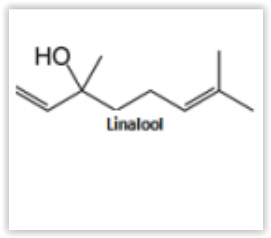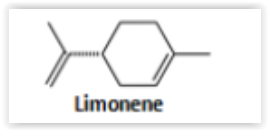- No product in the cart.
The Science Behind The Smell of Cannabis
Terpenes & The Smell of Cannabis
The distinctive cannabis odor is often times the first thing most people associate with the plant. Some people find it offensive, others find it intoxicating. And while everyone knows that cannabis has a pungent smell, many are unaware that the smell of the strain may be indicative of its effects. To understand how this is possible, we need to look into why cannabis smells they way it does, and what causes it to smell that way.
Why does cannabis smell so much? It is the cannabis plants’ defensive mechanism to keep insects and predators away from it flowers. Much like some humans, most insects and animals find the smell of cannabis to be offensive. The insect or animal then wanders off to nibble on a better smelling flower. By protecting its flowers it protects its ability to reproduce through seeding which happens when the flower is pollinated.
This leads to the second question, what makes cannabis smell the way it does? The answers is Terpenes & Terpenoids. Don’t get hung up on the difference between the two, terpenoids are simply terpenes that have been modified slightly, normally with oxygen. What matters is that there are over 100 terpenes in cannabis, and some of them are responsible for the smell of the strain. We know this because the terpenes in cannabis also appear in other plants. And it is these similar smells that help identify a strain, and thereby the effects of the strain.
Much like wine, the smell of cannabis should be associated with non cannabis aromas. That aroma is then associated with an effect or symptom it relieves. As you build this mental catalog of cannabis smells, you will be able to smell any strain and reasonably predict that likely effects it will have upon smoking.
Since there are over 100 terpenes in cannabis, there is no way to cover them all in a single article. But let’s start by looking at some of the most commonly found terpenes, the smell associated with it, where it can be found in nature, and the strains that contain high amounts of the terpene.
Alpha-Pinene / α-Pinene 
Found in nature: Pine trees and rosemary
Relieves: Anxiety, stress, inflammation, pain, migraines, asthma
Effects: Energetic, focused, alert
Strains: Super Silver Haze, Blue Dream, Train Wreck, Jack Herrer
α-Pinene smells like pine needles. It can help you breath easier and focus. Contrary to the forgetfulness attributed to cannabis, α-Pinene has been shown to help memory retention and recall. α-Pinene is anti-inflammatory and anti-microbial.
Caryophyllene / β-caryophyllene 
Found in nature: black pepper, cinnamon, cloves, and spices like oregano, basil
Relieves: Anxiety, depression, inflammation, pain, migraines
Effects: Happy, social, relaxed
Strains: OG Kush, Skywalker, Girl Scout Cookies
Caryophyllene, or beta-caryophyllene has that peppery smell. It is the only terpene that binds to cannabinoid receptors, which makes it an ingredient in topicals and creams. Besides its analgesic and anxiolytic properties, some studies have found that caryophyllene may have a role in alcohol rehabilitation. Caryophyllene will elevate your mood and take your worries away.
Linalool 
Found in nature: Lavender, mint, cinnamon, coriander
Relieves: Anxiety, insomnia, epilepsy, sedative, pain, migraines
Effects: Relaxed, chill
Strains: Amnesia, G-13, LA Confidential, OG Shark
Along with myrcene, linalool is one of the major components that give cannabis its unique smell. Floral with a hint of spice, linalool is found in a lot of cannabis strains. Many herbal teas meant for relaxing moments use mint, cinnamon, and lavender. All of those herbs have linalool as a major component in their smell. Thus it shouldn’t be surprising that linalool imparts that relaxed, secure feeling much like its herbal cousins.
Limonene 
Found in nature: oranges and lemons, particularly the rinds.
Relieves: Anxiety, stress, inflammation, pain, migraines, asthma, depression
Effects: Talkative, social, energetic
Strains: Lemon Haze, Sour Diesel, OG Kush
Limonene is a very common terpene, though not all strains have it. Not surprisingly limonene has a citrus or lemony smell. It can be found in beauty products and cleaning supplies to give that citrus scent. Limonene is known to improve the mood, and reduce stress. This makes it an excellent social terpene to share among friends on a night out. Limonene has also been shown to be antibacterial and antifungal suggesting it will have major medical applications.
Myrcene 
Found in nature: mango, lemongrass, hops
Relieves: Anxiety, inflammation, pain, migraines, depression
Effects: Relaxed, stoned
Strains: White Widow, Skunk, Special Kush
The most abundant and prevalent of terpenes, myrcene, along with linalool, is the other half of the one-two cannabis smell maker. Myrcene smells like musty earth. Some find it to be tropical, fruity or even a clove like scent that hovers somewhere between crusty soil and herbs. A strain containing more than 0.5% myrcene is normally an indica with sedative effects. High myrcene induces the couch-lock effect.
Mango Power – Eating mango about an hour before smoking cannabis can heighten THC effects due to the presence of myrcene in mango. Having myrcene in your system prior to smoking increases the absorption rate of other terpenes.
This is just a small sample of the major terpenes found in cannabis. You can now start to associate the smell of cannabis with the potential effects you desire. If the strain smells like lemon, it will probably not induce couch-lock. However a strain that smell earthy and musty has a good chance to deliver that same couch-lock effect. While not 100% accurate, this guide to terpenes and their smell should help you pick the strain you want just by a simple smell test.

